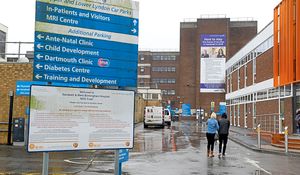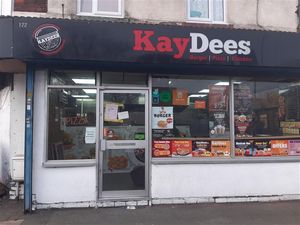Hospital deaths: 239 more die than expected in Sandwell
More patients from Sandwell hospitals died than were expected to last year, according to shock new figures revealed by the Express & Star today.

And Wolverhampton’s New Cross Hospital posted the worst unexpected death rate in the country – a staggering 475 more deaths than had been estimated.
NHS officials estimated there should have been 1,898 deaths across the Sandwell and West Birmingham NHS Trust (SWBNT) or within 30 days of discharge in 2017.
However, 2,137 people died at the trust, which runs Sandwell General Hospital and City Hospital in Birmingham, 13 per cent more than had been estimated.
More coverage from the Express & Star
The figure exceeds the official ‘expected’ rating for NHS trusts, which allows for leeway over estimates.
But SWBNT bosses have questioned the figures, telling the Express & Star that they have been ‘reviewed and found to be incorrect’. They added, however, that they believed that there was more that they could do to save lives and were continuing to make improvements.
The statistics were compiled in the latest NHS Digital report on hospital mortality rates, and show that SWBNT was one of 13 trusts categorised as having higher death rates than expected.
Elsewhere
They include the Royal Wolverhampton NHS Trust, which was the worst in the country with 475 more deaths than were predicted. The trust recorded 2,654 deaths in 2017, 22 per cent higher than the estimate of 2,179.
NHS Digital has warned that the figures, which were brought in as a result of the Mid-Staffordshire hospital crisis, only act as a ‘smoke alarm’ to prompt further investigation.
The other trusts in the region were classed as having a mortality rate ‘as expected’, despite recording more deaths than had been estimated.
Walsall Healthcare NHS Trust, which runs Manor Hospital, had 147 more deaths than expected (10 per cent), and University Hospitals of North Midlands, which runs County Hospital, had 190 more deaths than expected (five per cent).
The Dudley NHS Foundation Trust, which runs Russells Hall Hospital, had four per cent more deaths than expected at 2,433.
The figures come from the Summary Hospital-level Mortality Indicator.
A similar form of data analysis helped to uncover the Mid Staffs hospital scandal in 2010, which saw between 400 and 1,200 patients die as a result of poor care between January 2005 and March 2009 at Stafford Hospital Sir Robert Francis QC, published his final report into the scandal in 2013, finding that bosses became obsessed with cost-cutting and government targets at the expense of care.
His report in the wake of the 2010 public inquiry found hundreds of patients experienced ‘appalling and unnecessary’ suffering.
Bosses refute figures but admit more can be done
The medical director at Sandwell and West Birmingham Hospitals Trust says the latest mortality figures ‘overstate’ the number of unexpected deaths that occurred last year.
The trust is one of 12 across the country categorised as having higher death rates than expected.
In total, in 2017, 2,137 people died at the trust, which runs Sandwell General Hospital and City Hospital in Birmingham.
This was 13 per cent more than had been estimated.
The statistics were compiled in the latest NHS Digital report on hospital mortality rates and includes both cases where patients have died on site and those who died within 30 days of discharge. But the trust’s medical director Dr David Carruthers, told the Express & Star that the statistics have been reviewed and were found to be incorrect.
He said the trust was continuing to work to improve though and that it was ‘proud’ of its safety record.
Dr Carruthers also assured patients that they could have confidence in the care they receive at the trust.
“We know that these figures overstate the number of unexpected deaths.
“The data has been reviewed and found to be incorrect.
“However, we also know that there is more that we can do to save lives, and the Trust is focused right now on our number one quality priority, which is tackling Sepsis.
“We have been aware of and have been working to improve this data which has been discussed in public at each Board meeting since April.
“The Trust is proud of our safety record and improvement in the CQC ratings system, and local residents should have confidence in the quality of care our teams provide,” he said. The hospital trust was rated as ‘requires improvement’ by the CQC in October last year found urgent and emergency services at the hospital must improve along with services for children and young people.
It found medical care, surgery, critical care and outpatients and diagnostic imaging to be ‘good. While end-of-life care was rated ‘outstanding’.
Improvements have been made since the inspection and chief executive Toby Lewis said he was pleased that the leadership of the organisation was now rated as ‘good’.




